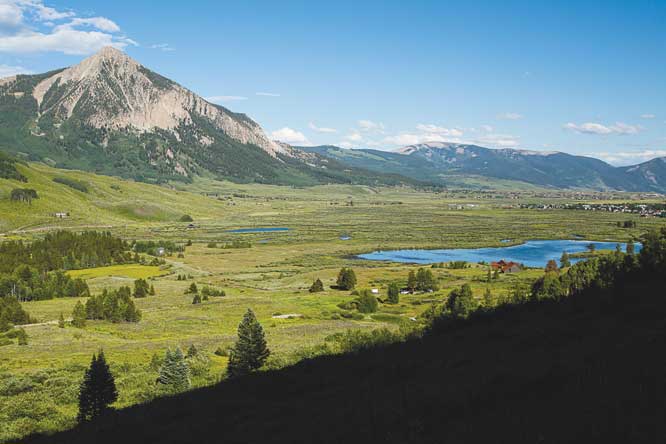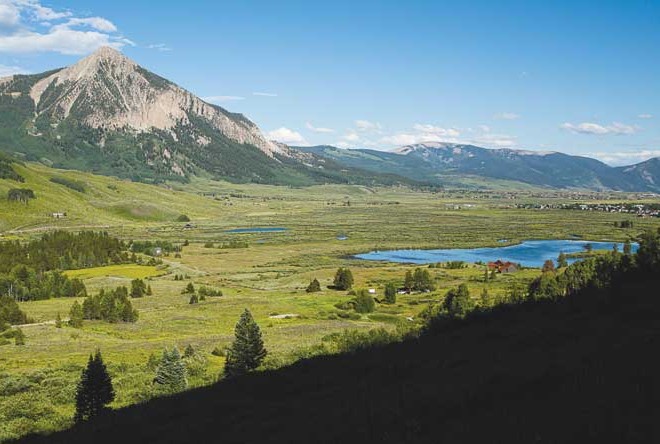Lessens chance of a breach
by Mark Reaman
The Crested Butte Land Trust is hoping to start a new project this fall meant to protect Peanut Lake, just west of Crested Butte. The Riparian Restoration Project will reduce the risk of a breach of Peanut Lake by creating a natural riparian floodplain buffer between the Slate River and the lake. The Crested Butte Town Council, holder of the conservation easement on the property, gave its support for the project on Monday, July 20.
Land Trust stewardship director Danielle Beamer told the council that based on recent data, a team of ecologists has concluded that a breach of the lake is very possible in the next ten years but the exact timing is nearly impossible to pinpoint. The lake is essentially there in large part because of beaver dams blocking up the water. In fact, the beaver work has kept the lake approximately three feet higher than the river.
“The beavers are still very active out there,” Beamer said. “They are doing lots of work maintaining Peanut Lake and creating habitat for a broad range of species.”
The restoration work will include removing a manmade gravel berm that is east of the lake and realigning approximately 800 feet of river. “This will create a more natural river profile and reconnect the river to its floodplain on both sides of the river. That will allow the floodplain to naturally absorb spring flooding that is currently eroding toward the lake and putting a lot of pressure on the beaver dams,” said Beamer. “A more naturally broad channel with wetlands on either side will help filter water and keep the river system healthy.”

The gravel berm was apparently put in place to control the flow of the wetlands at a time when there was less understanding about the wetlands’ critical function. The gravel from the berm will stay on sight to be used to fill the current channel in the realigned segment of the wetland.
In a memo to the council, the land trust said the restoration will “significantly lessen the risk of a Peanut Lake breach… We expect the distance between the lake and the river to increase from six feet to 115 feet at critical locations. In addition, the rate of bank migration and erosion toward the lake will be significantly decreased by opening up floodplain connectivity on the east bank, allowing high flows to spread rather than build up power within a confined channel.”
The project is expected to result in an additional 2.5 acres of wetlands. Volunteers will re-vegetate the area by planting about 1,000 willows and 2,500 sod plugs to enhance vegetation and increase bank stability.
The hope, according to land trust executive director Ann Johnston, is to start this October but she said the land trust must raise more than $60,000 before starting the project. Total cost of the restoration is estimated to be about $110,000 and a grant request for $31,000 has been submitted to the Colorado Water Conservation Board Healthy Rivers Fund, but a decision has not yet been made. GOCO has committed $25,000 through its Riparian Restoration Initiative.
Johnston said private donors will need to play a big part in the funding. “We really want to stop the erosion before it’s too late, so we’ll be relying on individual donations for about 25 percent of the funding,” Johnston said.
In fact, a local family with a strong affinity for Peanut Lake pledged $1,000 to the project this week. They want to remain anonymous. However, they said they would increase the amount to $5,000 if the money to do the project can be raised before this October so that the restoration work can be done this year before the snow flies. Johnston hopes this might motivate other private donors.
The Nordic winter Beaver Trail would be impacted as a result of the work but Johnston said the trail could be relocated in the same area.
 The Crested Butte News Serving the Gunnison Valley since 1999
The Crested Butte News Serving the Gunnison Valley since 1999



